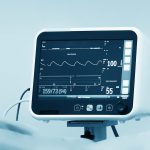Europe | US FDA | INDIA (DGFT)
EUROPE
1.Guidance for industry on MHRA’s expectations for return to UK on-site inspections
In line with a reduction in restrictions, the inspectorate plans to resume an on-site UK risk-based GxP inspection programme starting in September, scaling up to a full programme from October 2020. This will use a combination of remote and on-site inspection approaches as COVID-19 restrictions are eased.
2.MDCG explains how notified bodies can use MDSAP audit report
The purpose of this document is to provide guidance to notified bodies on how to take into account MDSAP Medical Device Regulatory Audit Reports1 (from hereafter “MDSAP audit reports”) issued by MDSAP auditing organisations2 when performing surveillance audits under Regulation (EU) 2017/745 – Medical Devices Regulation (MDR) and Regulation (EU) 2017/746 – In Vitro Diagnostic medical devices Regulation (IVDR). This is of particular use when a manufacturer has undergone an MDSAP audit and wishes to present this audit report (including the associated attachments) in context of the regular surveillance audits performed in accordance to the MDR or IVDR.
The guidance also includes two annexes explaining where MDR/IVDR-relevant information can be found within MDSAP audit reports and providing examples of how MDR requirements for clinical evaluation, supplier controls and post market surveillance and corresponding sections of MDSAP audit reports can be linked.
3.MHRA: Medical devices: guidance for manufacturers on vigilance
One must report adverse incidents with your medical device to the competent authority where the incident happened.
The new regulations, EU MDR and EU IVDR strengthen the vigilance and post-market surveillance requirements for manufacturers.
Changes affecting what needs to be reported to MHRA and when to do it include tighter timescales for manufacturers to report adverse events, the introduction of periodic summary update reports (PSUR) and widening the definition of a medical device to bring more products under scrutiny.
There is guidance on the MDR and IVDR for manufacturers of medical devices and IVDs online.
Both the FSN and MIR forms have been updated and are applicable under the current directives and the forthcoming MDR/IVDR regulations.
4.JAZMP: Safety Notices for Medical Devices – June 2020
The manufacturer of the medical device or the manufacturer’s representative must inform both the JAZMP and the users of the medical device in writing of the safety corrective measures, and the manufacturer must ensure that all users are properly informed.
Safety notices are available at the following:
In addition to the safety notification, the manufacturer of medical devices or the manufacturer ‘s representative must also submit to the JAZMP a report on safety corrective measures in accordance with Article 15 of the Rules on the Vigilance of Medical Devices (Official Gazette of the RS, No. 61/10 ).
The monthly list of security notices may not be complete. The list includes safety notifications received by JAZMP. If you receive a safety notification from the manufacturer that is not on the monthly list, please let us know by e-mail: meddev.vigilance@jazmp.si.
US FDA
5.Medical device Accessory Classification request granting decisions
The FDA may either grant or decline an Accessory Classification Request. If the FDA grants an Accessory Classification Request, the FDA intends to provide a link to the classification order, on this page.
For more information about submitting requests and the FDA review timeline and decisions, see Medical Device Accessories.
6.FDA updated Federal Register: Physical Medicine Devices: Reclassification of Non-Invasive Bone Growth Stimulators
The Food and Drug Administration (FDA) is proposing to reclassify non-invasive bone growth stimulators, post amendments class III devices (product codes LOF and LPQ), into class II (special controls), subject to premarket notification. FDA is also proposing a new device classification with the name “non-invasive bone growth stimulators” along with the proposed special controls that the Agency believes are necessary to provide a reasonable assurance of safety and effectiveness of these devices. FDA is proposing this reclassification on its own initiative. If finalized, this order will reclassify these devices from class III (premarket approval) to class II (special controls) and reduce the regulatory burdens associated with these devices, as these devices will no longer be required to submit a premarket approval application (PMA), but are subject to premarket notification (510(k)) requirements and general and special controls.
7.New Guidance Document: Cutaneous Electrodes for Recording Purposes – Performance Criteria for Safety and Performance Based Pathway
This guidance provides performance criteria for cutaneous electrodes in support of the Safety and Performance Based Pathway. Under this framework, submitters planning to submit a 510(k) using the Safety and Performance Based Pathway for cutaneous electrodes for recording purposes will have the option to use the performance criteria proposed in this guidance to support substantial equivalence, rather than a direct comparison of the performance of the subject device to that of a predicate device.
8.New Guidance Document: Conventional Foley Catheters – Performance Criteria for Safety and Performance Based Pathway
This guidance provides performance criteria for conventional Foley catheters in support of the Safety and Performance Based Pathway. Under this framework, submitters planning to submit a 510(k) using the Safety and Performance Based Pathway for Foley catheters will have the option to use the performance criteria proposed in this guidance to support substantial equivalence, rather than a direct comparison of performance of the subject device to that of a predicate device.
9.Evaluation of Automatic Class III Designation (De Novo) Summaries
The Food and Drug Administration Modernization Act of 1997 (FDAMA) added the De Novo classification option as an alternate pathway to classify novel medical devices that had automatically been placed in Class III after receiving a “not substantially equivalent” (NSE) determination in response to a premarket notification [510(k)] submission. Section 513(f)(2) of the FD&C Act was amended by section 607 of the Food and Drug Administration Safety and Innovation Act (FDASIA), on July 9, 2012, to allow a sponsor to submit a De Novo classification request to the FDA for without first being required to submit a 510(k).
India (DGFT)
10.India lifts all pandemic-related restrictions on ventilators exports (Amendment in Export Policy of Ventilators)
DGFT has changed its ventilator export policy in line with changing perceptions about the likelihood of hospitals running out of devices.
The total U-turn differs from the approach DGFT has taken to other products used in the response to the coronavirus pandemic. For example, DGFT has begun to allow the export of limited quantities of certain types of personal protective equipment, having previously stopped all such products from leaving the country. DGFT has opted against taking such an interim step in the relaxation of its rules on the export of ventilators.



